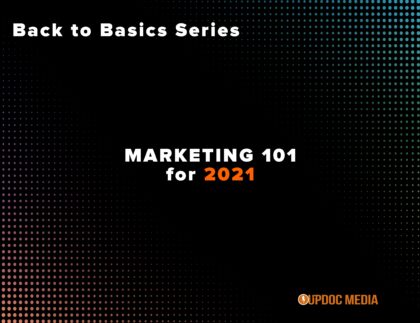
Step 1: The Pains & Gains
This idea is best known from the business canvas model; it adapts the jobs to be done approach with the concept of a value proposition. In essence, starting here determines if there is even a market for your product. What need (job) requires filling? What about filling that need is the most cumbersome for them their pains? And, what about filling that need do they wish for the most their gains? Harvard business professor Theodore Levitt is famous for saying, “Nobody wants a 1/4 inch drill—what they want is a 1/4 inch hole.” Does your product fill a need or reduce a cost? If so, you have just created a customer. Does your product kill pains and make gains for the prospective consumer? If so, you have the foundations of your marketing plan.
Step 2: What Is Your Marketing Mix?
After establishing the fact you do indeed have a market for your product, and, that your product does present a unique value, now we have something fun to talk about. Your marketing mix! Most marketers consider the marketing mix as the “4 Ps”
- Product
- Price
- Placement
- Promotion
Some schools of thought have also included a 5th “P” in the form of Profit. The nice thing about this 3 part framework is that Part 1 *is* your first P, your product. To know that you actually have a product is important! I can’t tell you how many times I’ve seen businesses simply produce something and call it a product when it is not really marketable. In those instances, it’s a hobby. In any case, following the 4 Ps, we need to talk about price.
Defining the price gives you an internal feedback loop on your value proposition. I’ve found a commonly accepted definition of value as:
Value = Benefit / Price, aka “bang per buck.”
I’ve also seen equations like: Value = Outcome / Cost. But, really, it’s all the same.
Value = (Gains made + Pains killed) / Price of product
It’s all describing the same thing as matter of perspective. So check your price. Where would it be that you could make your product the most valuable to them? It’s not always the lowest price; lowering your price many times lowers the amount of benefit your product can offer. Low prices often means you may not be able to afford to produce high quality products.
Then, we must think of placement. Some marketers also call this “positioning” to some extent. Where will you be placing your product for sales? Online? Retail? Direct sales? B2B? Will it be sold on the top shelf? Middle? In bulk? How will it be made available for consumers? Will you do a product launch or small market tests? Etc. etc. etc.
Finally, you must think of promotions. How will you promote your product? Will you have parallel promotions? Freebies? How will you advertise? Will you engage in guerilla marketing? What’s your plan in generating awareness and demand? What about cobranding? Endorsements? Maybe sales demonstrations? All the various ways you have to make your product more interesting and raise share of mind in the general consumers must be considered for this step to be successful. Most importantly, the mental framework of this step must be from the perspective of the consumer.
Step 3: Plot Your Strategic Approach
One of the most difficult responsibilities of any marketer is the screening for future opportunities and threats. Nearly every strategic theorist and marketing guru will hold a different method of approach. Some say go where the demand will be. Others say, go to where the money is. Yet still, another school of thought may be to quell threats and stay ahead of your own strengths.
Regardless of how you decide to plot your strategic approach, you MUST include a regular screening of the future market projections. You can use any framework really: SWOT, Porter’s 5 Forces, Blue Ocean Strategy… just to name a few. Personally, I’m a big fan of the SWOT analysis because it serves as such a great reality check. And, it also loops back to Step 2 which then bounces back to Step 1.
A SWOT Analysis (Strengths, Weaknesses, Opportunities, Threats) also allows you to analyze your competition to which then you can attack their weaknesses, follow fast and swoop in on their opportunities, and even split their resources such that they must address their threats, minimizing their ability to attend to current strengths. It’s a powerful tool if done correctly, systematically, and with the right gauge of reference points.
Perhaps the most important part of Part 3 is the creation of a feedback loop toward Part 2 and Part 1. Step 3 answers the question of sustainability. Step 2 answers the question of a relevant marketing mix. And, Step 1 revisits the question of product viability in the marketplace. If there is any change in this feedback loop, you need to either change your product, change your marketing mix, or change your strategic approach entirely.









